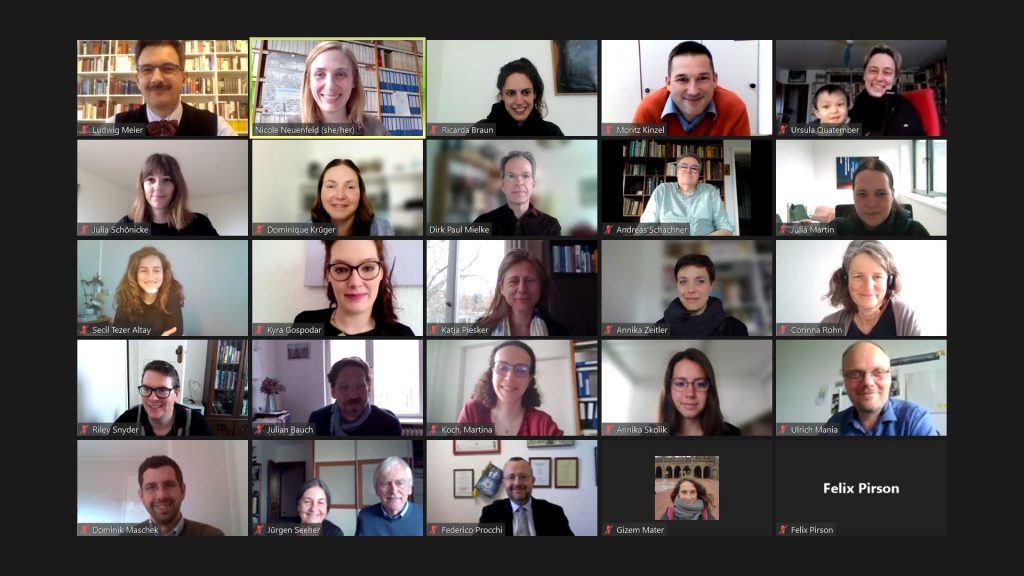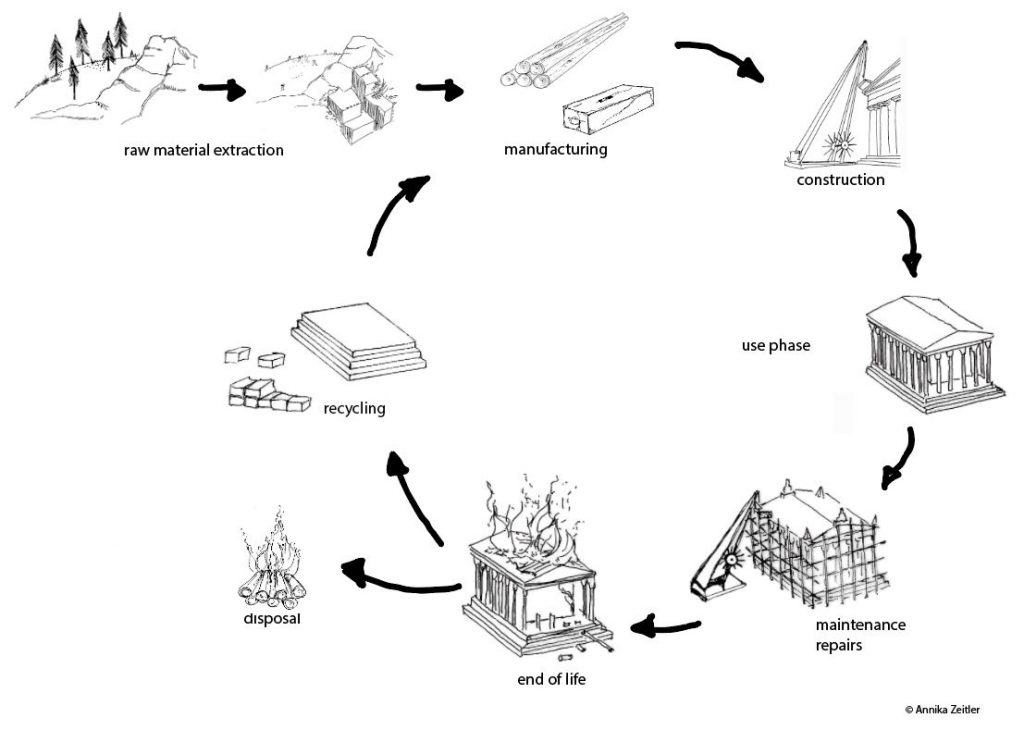The 4th seminar of the 6th Research Network „Building, Building Economy and Building Sites“ was held online on April 1st and 2nd, 2022. It focused on the “lifecycle” of ancient buildings (Fig. 1). In this context, we asked for models for upkeep, repair and reuse. Another point was the relationship between continuity and change as well as maintenance and repair in individual buildings versus large scale events such as earthquakes. The question of legal aspects was intended to provide a new perspective, which we wanted to examine in a fishbowl discussion.

Photo: N. Neuenfeld
Our seminar opened with some theoretical considerations. Katja Piesker started this network session with a keynote lecture on current discussions of terminology and the use of terms such as recycling, reuse, repurposing, or upcycling. Mustafa Koçak has pointed out that there can be various reasons for the use of spolia. And Corinna Rohn tried to integrate the ideas of the design process into our drawing of the “lifecycle” of buildings.

Graphic: A. Zeitler
The theoretical session ended with a discussion on the legal aspects of maintenance, upkeep, abandonment and demolition. First, four invited speakers presented written sources on different aspects of this topic: Cristina Carusi from Parma showed how building, restoring, and maintaining public buildings worked in Classical Athens. Kaja Harter-Uibopuu from Hamburg addressed the question, who is responsible and who pays for repairing public buildings. Ludwig Meier from Vienna demonstrated from an epigrapher’s point of view the difficulties and uncertainties which still exist, despite the various sources we have on this subject. Finally, Federico Procchi from Pisa focused on voluntary demolitions of private buildings in Roman law, and what kind of primary legal provisions were undertaken in that matter between the 1st century BC and the 3rd century AD.
Subsequently, the participants of our workshop could enter into a discussion with the invited experts on Roman law. Many members of the network were engaged in a lively exchange on questions concerning the rebuilding of the Temple of Dionysos in Pergamon, the financing of repairs, and the legal obligations for damages that occurred during the building process. Another point of discussion was the legal measures to prevent speculation with vacant buildings and their demolition.
Several of the theoretical aspects discussed earlier, were again addressed in the following case studies, which were arranged in chronological order. We started with the oldest example of Göbekli Tepe where we could see the lifecycle or “spiral” of buildings from Neolithic until modern times. Moritz Kinzel and his colleagues showed that spolia were used in order to reduce the effort, because of a lack of the needed building materials and considering a memorial factor. In Hittite times, as presented by Dirk Paul Mielke, we find something similar. Temples, for example, were built on top of older temples – keeping the function and even reusing some of the older building parts.
On the second day of the network meeting, we focused on the Roman period and Late Antiquity. Our guest speaker Julian Bauch (Braunschweig) pointed out the potential of “Reverse Life Cycle Assessment in the case of architectural Terracottas from Pompeii”. Nicole Neuenfeld, as our second speaker, showed life cycles versus adaptive cycles on the example of the City Hill´s East Slope in Pergamon. Afterwards, staying in the site of Pergamon, Ulrich Mania contrasted the re-use of materials in the construction of the Late Roman and Byzantine fortification walls.
The last session of the network focused on the Byzantine Period. Alkiviadis Ginalis spoke about the economy in Byzantium using the example of harbor constructions. His main point was the spoliation of architecture and its interpretation. James Riley Snider followed up with a discussion of the value of broken bricks and tiles in Constantinople, demonstrating a re-use of bricks as the actual production could not meet the demands. Fabian Stroth then gave an overview of the many lives of the sanctuary in Didyma. Especially the combination of different architectural elements in the Middle Byzantine church that did not fit together led to further discussions. Last but not least Martina Koch presented parts of her dissertation about the church complex at Katapoliani where she could already divide the various spolia into different categories.
The seminar ended with an open discussion about the topographical and socio-cultural aspects which could influence the lifecycles, such as accessibility of building materials, the size of the settlement and the necessary workforce, natural disasters, religious aspects or simply the financing of the projects. In addition, we also worked out various reasons for the use of spolia as part of the lifecycle – especially economic and memorial ones. Overall, the event showed once again the potential of the network’s issues, despite the continued virtual presence of members due to the pandemic, and led to new collaborations between colleagues from different disciplines.
Text: Kyra Gospodar, Dominique Krüger, Ursula Quatember, Annika Zeitler
